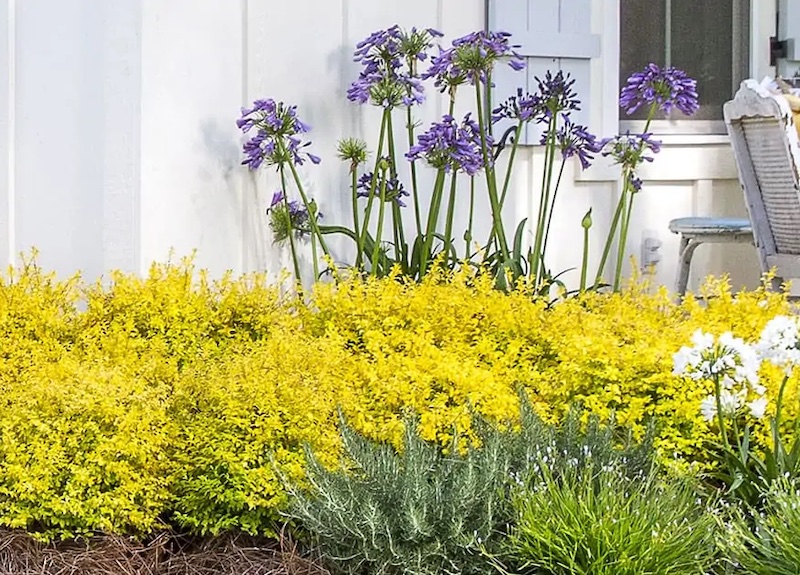Agapanthus Growing Conditions: Soil, Sunlight, and Watering
Agapanthus Growing Conditions: Soil, Sunlight, and Watering
Blog Article
Grasping the Art of Agapanthus Treatment: Crucial Actions for Healthy And Balanced Growth and Dynamic Blooms
In the realm of cultivation, the growing of agapanthus stands as a fulfilling undertaking for those that seek to nurture these sophisticated flowering plants. From picking the best selection to understanding trimming methods, the trip in the direction of growing thriving agapanthus plants is multifaceted and holds the vital to unlocking the full capacity of these botanical gems.

Choosing the Right Agapanthus Selection

When selecting the appropriate Agapanthus range for your garden, think about elements such as environment suitability, blossom color, and growth habit. In addition, consider the climate in your region to ensure the Agapanthus range you pick can flourish in your certain problems. Comprehending the development practice of different Agapanthus varieties is critical for appropriate positioning within your garden.
Ideal Growing Conditions
Thinking about the optimal ecological requirements is necessary for successful Agapanthus growing. Agapanthus thrives in well-draining soil with a somewhat acidic to neutral pH level. When planting, pick a location that receives complete sunlight to partial color. In hotter climates, offering some mid-day color can stop scorching of the fallen leaves. Agapanthus plants are sensitive to chilly temperature levels and should be safeguarded from frost throughout winter months.
To make sure healthy and balanced development and vivid blossoms, plant Agapanthus light bulbs at a deepness of concerning 2-4 inches and room them 8-12 inches apart. Mulching around the base of the plants assists maintain wetness and reduces weed growth.
Watering and Fertilizing Tips
Preserving correct dampness degrees and providing necessary nutrients are crucial components in the care routine for Agapanthus plants. When it comes to sprinkling Agapanthus, it is essential to strike an equilibrium. These plants like consistently damp dirt however are susceptible to root rot if overwatered.
Feeding Agapanthus is vital for advertising healthy development and respected flowers. Use a balanced plant food, such as a 10-10-10 formula, in the early springtime as new development arises. Repeat this application every 6-8 weeks throughout the growing period. Avoid extreme fertilizing, as it can lead to lavish foliage at the expense of flowers. Constantly follow the producer's directions for proper dilution and application approaches. By adhering to these watering and fertilizing pointers, you can guarantee linked here your Agapanthus plants grow and produce lively, long-lasting flowers.
Trimming Techniques for Agapanthus
Trimming Agapanthus plants at the proper times and with correct methods is crucial for keeping their wellness and promoting optimum growth and blooming. The excellent time to trim Agapanthus is in late winter season or very early springtime before new growth emerges.
Deadheading spent flowers can additionally reroute the plant's energy into creating even more blossoms rather than establishing seeds. If you want to accumulate seeds for proliferation, leave some flowers to completely dry and fully grown find more on the plant.
Keep in mind to make use of tidy, sharp devices to make exact cuts and reduce the risk of introducing diseases. Agapanthus. Regular pruning will certainly assist maintain your Agapanthus looking healthy and balanced and neat while guaranteeing an abundant screen of stunning blossoms
Taking Care Of Usual Bugs and Diseases
After ensuring correct trimming techniques for Agapanthus, it is vital to resolve common insects and conditions that can influence the health and vitality of these plants. Agapanthus plants are typically durable yet can still succumb specific concerns. One common pest that influences Agapanthus is the Agapanthus gall midge. This small, orange fly lays its eggs in the foliage, leading to distorted development and blossom buds that fail to open. To combat this insect, prune and destroy any kind of damaged plant parts and think about making use of insecticidal soap.
Furthermore, Agapanthus plants can experience from root rot if they are planted in improperly draining dirt. By being alert a knockout post and taking prompt action against conditions and parasites, you can aid your Agapanthus plants prosper and produce lively flowers. Agapanthus.

Final Thought
To conclude, mastering the art of agapanthus treatment involves selecting the appropriate range, giving optimal planting problems, proper watering and fertilizing, suitable pruning methods, and addressing typical insects and illness. By following these vital steps, you can ensure healthy and balanced development and dynamic blossoms for your agapanthus plants. Bear in mind to routinely monitor and keep your plants to advertise their overall well-being and durability.
To ensure healthy and balanced development and vivid blooms, plant Agapanthus light bulbs at a depth of regarding 2-4 inches and space them 8-12 inches apart. By following these watering and fertilizing ideas, you can guarantee your Agapanthus plants prosper and produce lively, lasting blossoms.
One typical parasite that affects Agapanthus is the Agapanthus gall midge. Additionally, Agapanthus plants can suffer from origin rot if they are planted in poorly draining dirt. By complying with these crucial actions, you can guarantee healthy growth and vibrant blooms for your agapanthus plants.
Report this page